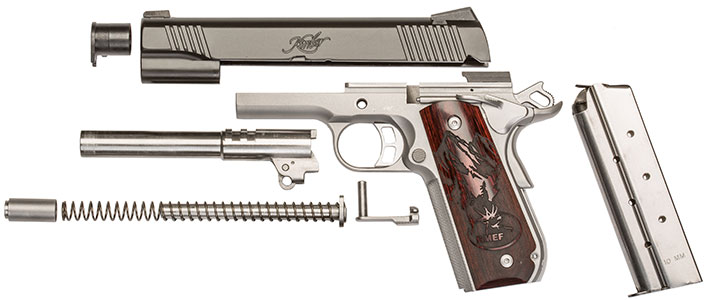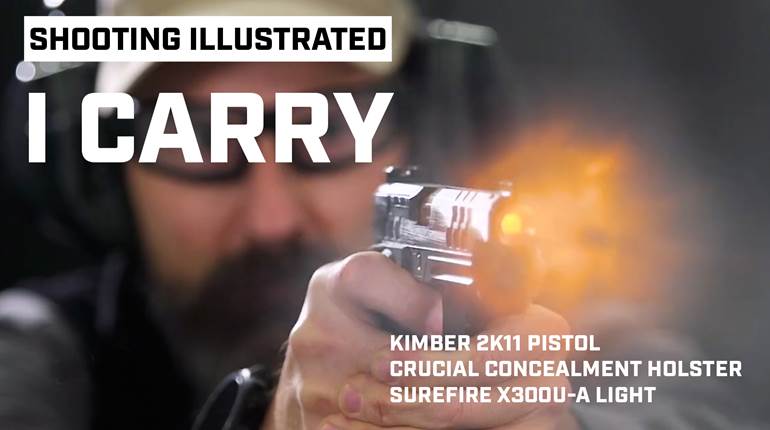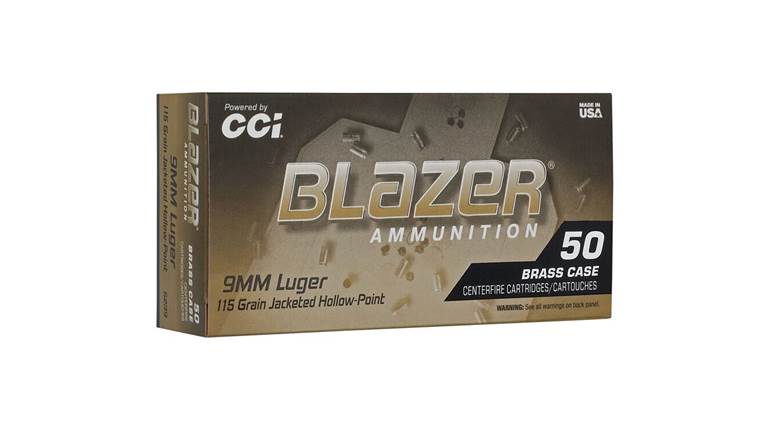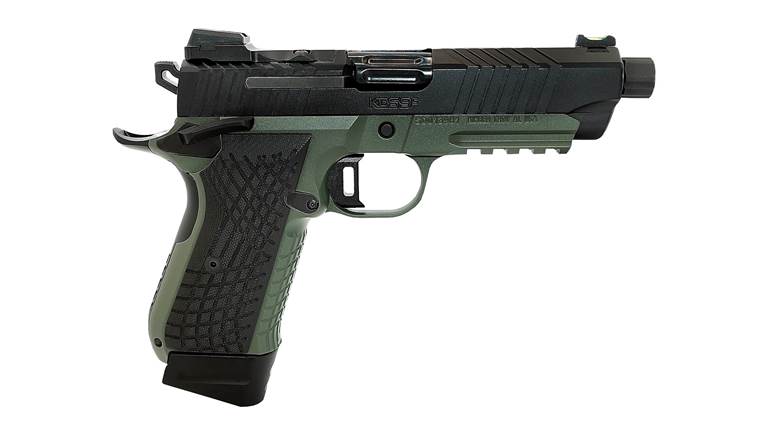
Although the popularity of the 10 mm Auto has waxed and waned repeatedly since its debut in 1983, this potent rimless cartridge currently enjoys a loyal following among handgun hunters and those outdoor enthusiasts looking for semi-automatic pistols with enough punch to counter attacks from dangerous predators of both the four-legged and two-legged varieties. Working in partnership with the Rocky Mountain Elk Foundation (RMEF), Kimber has developed the Camp Guard 10 M1911-style pistol as a backcountry companion. A portion of the proceeds from the sale of the guns will be contributed to RMEF’s conservation efforts.
The Camp Guard 10 is a modern interpretation of the classic John Browning single-stack, single-action, linked-barrel design. The flat-top, stainless steel slide features rounded edges, front and rear cocking serrations, a flared ejection port and a matte black KimPro II finish that gives the pistol a handsome two-tone appearance. The metallic, three-dot, tritium night sight system employs a dovetailed front sight paired with a low-profile, tactical wedge rear sight that is drift-adjustable for windage.

The 5", linked, stainless steel barrel is cut with traditional land-and-groove rifling with a 1:16" left-hand twist. The barrel is supported by a match-grade bushing and a recoil assembly consisting of a full-length guide rod and a single 18-lb., 8-oz. spring. The skeletonized aluminum trigger is serrated and fitted with an adjustable overtravel screw. The trigger of the pistol tested for this review had a short, crisp pull that broke cleanly at 5 lbs., 1 oz. of pressure.
The satin-finish, Government-size, stainless steel frame has a traditional rounded dustcover and trigger guard. The controls, including the slide stop, thumb safety and magazine release, are all located on the left side of the frame and operated in typical M1911 fashion. The slide stop and magazine release are both checkered, while the surface of the extended thumb safety is serrated. The extended beavertail grip safety protects the shooting hand from the skeletonized, combat-style hammer.
The frontstrap offers fine 30-l.p.i. checkering, with the mainspring housing serrated for improved purchase. Known as a bob-tail grip, the heel of the frame has been rounded so that it will not dig into the hip or side when carried. The custom stocks are carved from rosewood, polished to a high shine and then engraved with a mountain scene and RMEF’s elk head logo. Each panel is secured to the frame with two stainless steel screws. The pistol ships with one of Kimber’s stainless steel eight-round magazines, with a blued-steel follower and a baseplate that has been drilled and tapped to accept a bumper pad.

The overall fit and finish of the Camp Guard 10 proved to be excellent. The slide-to-frame fit felt smooth right out of the box, and only improved with a light coating of gun oil. The pistol’s 39.5-oz. heft (with an empty magazine) is on-par with other full-size M1911s, and some evaluators felt its 5" barrel balanced the gun’s weight more naturally in hand than some 6"-barreled hunting models.
The rugged fixed sights provided a clear sight picture that was easy to quickly acquire when lining up with the target. One has to lean into the slide a bit in order to cycle it manually, but it’s worth that extra bit of work up front for the benefits in recoil management that the heavy spring provides. Even with stout 10 mm Auto hunting rounds, the Kimber is just as comfortable to shoot as it is to carry, as the entire backstrap and mainspring housing have been rounded off for increased shooting comfort.

It’s not unusual for an all-steel M1911 to require a break-in period of 100 rounds or more. However, this 10 mm Kimber cycled factory loads reliably right from the start. Test ammunition ranged from moderate-power full-metal-jacket practice rounds to hot hunting soft points. It operated reliably with all test ammunition without any malfunctions. All of the controls worked smoothly and properly, with the magazines dropping free of the frame when the magazine release was pressed. The degree of felt recoil ranged from moderate to stout depending on the loads fired.
The new Kimber Camp Guard 10 offers an exceptional balance of features with plenty of defensive power. It successfully blends the precision construction of a reliable hunting handgun with the familiar and comfortable-to-carry features of an all-steel defensive M1911 pistol. It is equally suited for carry in the field or around town.







































